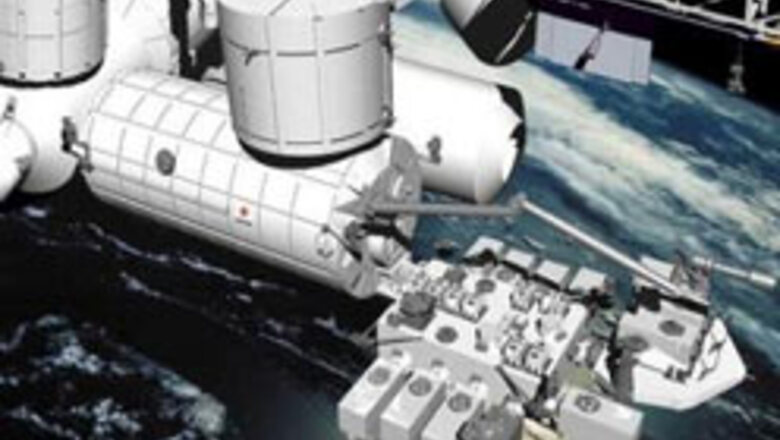
views
Cape Canaveral (Florida): Part of an elaborate Japanese science laboratory has arrived at the Kennedy Space Center in Florida ahead of its liftoff for the International Space Station, officials said on Tuesday.
The module is the second section of the lab named Kibo - a Japanese word for "hope" - to arrive at the launch site of the US space shuttle fleet.
NASA is devoting three shuttle missions to deliver and assemble the lab.
Kibo includes a bus-sized pressurised module where astronauts can conduct microgravity, life science and engineering experiments, an exposed platform for experiments outside the station, storage vessels and a small robotic arm to tend to outside experiments without the need for a spacewalk.
The Japanese Aerospace Exploration Agency, known as JAXA, has spent about $3 billion on the project.
Overall, the space station is expected to cost about $100 billion by the time it is finished in 2010.
Construction cannot be delayed beyond 2010 because the United States is retiring the space shuttles - the only craft designed to carry and install the station's major components. At least 13 more flights are needed to finish the outpost.
The project is headed by the United States and Russia, with contributions from 14 member nations including Japan.
Arriving at the Kennedy Space Center on Monday was Kibo's primary equipment storage module, which can hold up to eight experiment racks.
It had been scheduled for launch late this year but likely will be bumped to early 2008 due to delays in the next station assembly flight by space shuttle Atlantis.
NASA had hoped to fly Atlantis this week but its liftoff was delayed by damage to the insulating foam around its external fuel tank caused by a hailstorm.
The Experiment Logistics Module Pressurised Section left Japan on February 7 by ship. It will be temporarily housed at a payload processing facility at the space center.
Still to come are two more Kibo components and a final connecting node.



















Comments
0 comment